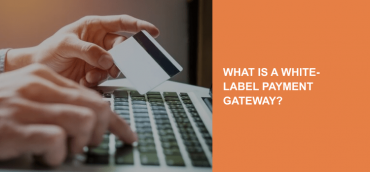With the rapid rise of digital payments, conventional payment methods are quickly being elbowed out of business. Banks and credit unions are now focusing their strategies on digital payment trends that could potentially inform the future of commerce.
The genesis of modern technology and generations is quickly impacting the way payments are made. There are a number of trends that are challenging businesses and forcing them to embrace more efficient and ingenious payment methods to satisfy the ever advancing needs and demands of modern consumers.
Below are five digital payment trends that are expected to change the face of banking by 2020
Digital payment trends to expect by 2020
1. The Rise of Generation Z
The reason why some financial institutions haven’t already welcomed the fact that the future of payments is being quickly digitized is that they don’t appreciate the force that is Gen Z. What they don’t know is that by the year 2020, about 40% of US consumers will be made up of these impatient and overly ambitious teens.
This is an emerging demographic that has no recollection of a world that didn’t have the internet and mobile applications and where manual payments were the order of the day. Gen Z takes nothing less than digital technology and mobile phones. Studies show that 80% of these teens and young adults – aged between 18 and 21 years – are giving up the TV for their mobile phones.
This is a generation that is restless and unapologetically demands immediacy and efficiency in the services they are provided with. It is reported that about 70% of generation Z has dumped orthodox banking methods for the more efficient and fast mobile banking.
2. Biometric authentication
There is a high possibility that the use of tangible systems like ATM cards to process payments will have its relevancy downgraded by 2020. With mobile apps like Apple Pay and Android Pay paving the way for biometric authentication, it is clear that this trend will have its place in the future of payments.
Already, some digital businesses are upgrading their software to support biometric authentication as a means of payment. The biometric technology has advanced from the basic fingerprinting and facial recognition to the more complex iris recognition, vein mapping, and heartbeat analysis. All these technologies will present a possibility for biometric payment systems in the future.
As compared to the traditional payment methods, biometric authentication is projected to boost efficiency, security, and accuracy significantly. Visa has already established, through consumer survey, that most of them find the idea of biometric authentication in making payments more attractive.
3. Increased need for Security
As the banking sector is immersed deeper into fraudulence, banks are coming up with systems that can outwit the fraudsters while remaining relevant and easy to use for the consumer. Security is becoming a key consideration in gauging the practicability of any payment system. This is triggered by the fact that consumers are growing wearier of losing their money to scammers and moving to more secure payment systems.
Accenture estimated that the banking industry would lose $31.3 billion globally due to card losses by 2018. This trend has in fact been increasing by 18% yearly from 2013. This, therefore, calls for innovative digital payment trends that will make it harder for fraudsters to survive. A more likely technology for this purpose would be the use of biometric security features to validate consumer payments.
It is evident that the need for more security in the banking industry will inform the payment trends of the future. As banks look to keep their customers and even attract more, they will have to invest in security features that are better than those of their competitors. This trend will, in fact, not ignore the need for increased simplicity and accuracy as desired by most consumers.
4. The change from Cards to Codes
In the past, a person’s bank account was identified using a series of unique digits on a card. However, with the advent of EMV technology, more secure and computerized techniques are being introduced. According to this new technology, bank accounts are based on codes that change every time a transaction is made in order to make them more secure.
In the future, the use of codes will likely overshadow plastic cards as more consumers look to embrace more secure systems.
This will also shape how payment processes are handled by modern technologies such as augmented reality, blockchain and the Internet of Things (IoT).
5. The Rise of Mobile payments
With the use of mobile phones skyrocketing through the years, more consumers are finding it convenient to use their phones to make payments. The introduction of APIs that make it easier to introduce more relevant and helpful functionalities for mobile applications has provided great potential for the growth of mobile payments.
You might also like How millennials are reshaping the digital landscape
More focus is being directed towards enhancing user experience and making the payments more flexible, accurate and instant. Although this trend was less embraced when it began due to the lack of added value that was being provided by plastic cards and cash payments, it has now become more attractive due to improved efficiency.
Banks are now investing more in mobile technology and making it the epicenter of their marketing strategies. Younger consumers are particularly, making this trend hard to ignore as they are projected to form the majority of future digital payment users. The younger generation craves for compensation in the form of rewards, discount and offers that can only be conveniently provided through mobile banking.
This is, in turn, pressurizing traditional banks to adapt to the needs of these new cohorts of consumers or risk being irrelevant.

Over to you
These are the five most important digital payment trends to look out for in 2020. The banking industry is now hugely investing in embracing some of these trends to remain afloat as 2020 approaches. The most notable trends are the rise of a new cohort of a generation that demands immediacy and simplicity and the need for more secure payment methods. Banks and other credit unions that still conform to conventional methods of payment will be forced to change their strategies and systems or risk being kicked out of business.






